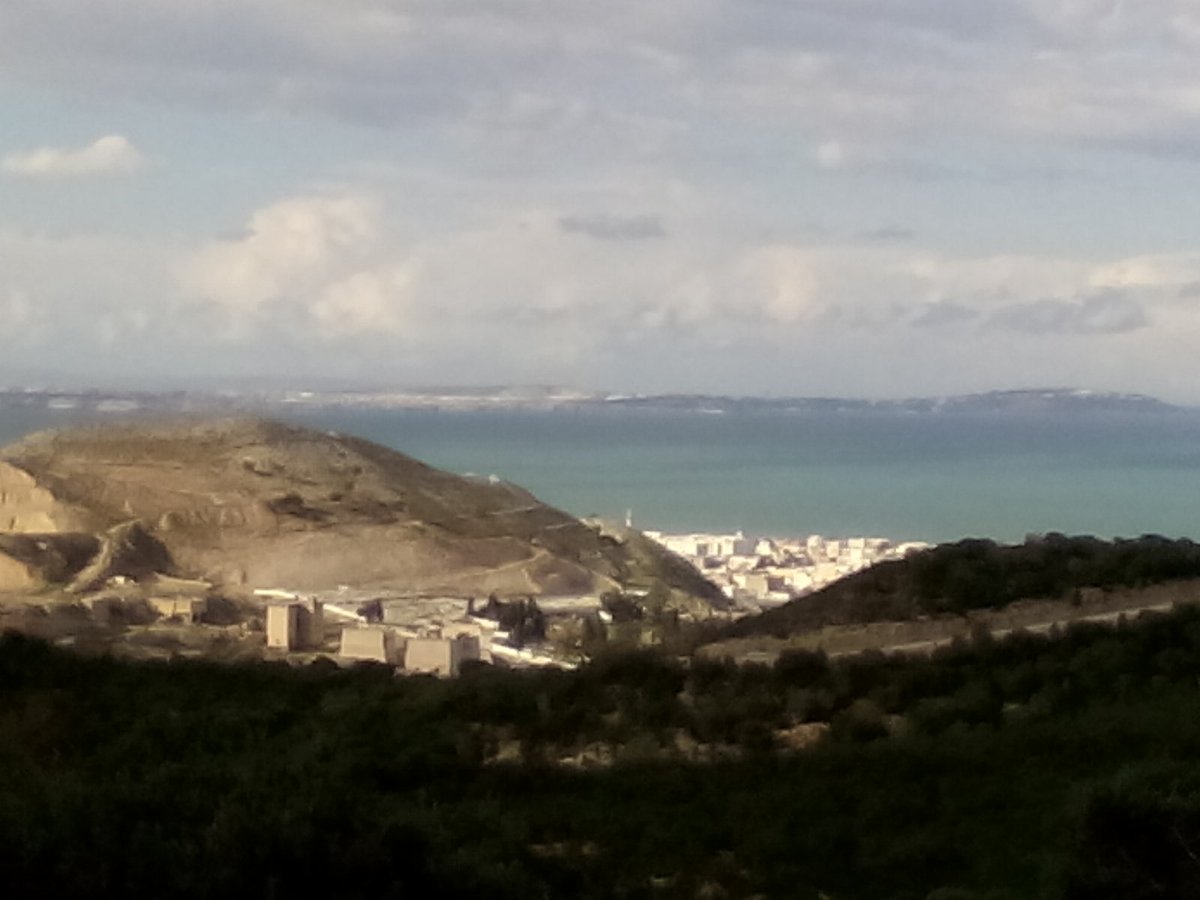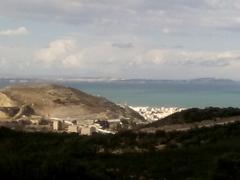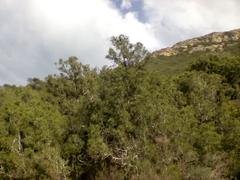
Visiting برج السدرية in Turki, Tunisia: A Complete Guide
Published Date: 19/07/2024
Introduction
Welcome to Borj Cedria, a historical treasure located in the Turki region of Tunisia. This site is renowned not only for its beautiful beaches and natural reserves but also for its rich tapestry of history that spans several millennia. From its ancient origins influenced by the Phoenicians and Carthaginians to its significant role during the Roman, Byzantine, and Ottoman periods, Borj Cedria stands as a testament to the diverse cultures and empires that have shaped Tunisia (Discover Tunisia). Today, Borj Cedria attracts tourists and locals alike, offering a unique blend of historical landmarks, cultural experiences, and modern amenities. This comprehensive guide aims to provide you with all the essential information you need to plan your visit, including historical insights, visiting hours, travel tips, and more.
Table of Contents
- Introduction
- Ancient Origins
- Roman Era
- Islamic Conquest and Medieval Period
- Ottoman Era
- French Protectorate
- Post-Independence Era
- Modern Significance
- Visiting Hours and Ticket Information
- Travel Tips
- Conclusion
- FAQ
Ancient Origins
The history of Borj Cedria is deeply rooted in the ancient civilizations that once thrived in the region. Tunisia, known for its rich historical tapestry, has been a crossroads of various cultures and empires. The area around Borj Cedria has seen the influence of the Phoenicians, Carthaginians, Romans, and Byzantines.
The Phoenicians, who established Carthage around 814 BCE, were among the first to leave their mark on the region. Carthage grew into a powerful city-state and controlled much of the Mediterranean trade. The strategic location of Borj Cedria, near the coast, would have made it an important site for trade and military activities during this period.
Roman Era
Following the Punic Wars, Carthage fell to the Romans in 146 BCE. The Romans established the province of Africa Proconsularis, with Carthage as its capital. During the Roman era, the region saw significant development, including the construction of roads, aqueducts, and public buildings. The remnants of Roman architecture and infrastructure can still be found in various parts of Tunisia, indicating the extent of Roman influence.
Borj Cedria, though not as prominent as Carthage, would have been part of this extensive network of Roman settlements. The Romans were known for their military fortifications, and it is likely that the area had some form of defensive structures to protect against invasions and to maintain control over the region.
Islamic Conquest and Medieval Period
The Islamic conquest of North Africa in the 7th century CE brought significant changes to the region. The Umayyad Caliphate expanded its territory, and Tunisia became part of the Islamic world. The city of Kairouan, founded in 670 CE, became a major center of Islamic learning and culture.
During the medieval period, the region saw the rise and fall of various dynasties, including the Aghlabids, Fatimids, Zirids, and Hafsids. Each dynasty left its mark on the region’s architecture, culture, and administration. The strategic importance of Borj Cedria would have continued during this period, serving as a point of defense and trade.
Ottoman Era
In the 16th century, Tunisia became part of the Ottoman Empire. The Ottomans established a strong presence in the region, and Tunis became an important administrative center. The Ottomans built several forts and defensive structures along the coast to protect against European invasions and piracy.
Borj Cedria, with its strategic coastal location, likely saw the construction or reinforcement of military fortifications during this period. The Ottomans were known for their military engineering, and their influence can be seen in the architecture and urban planning of the region.
French Protectorate
In 1881, Tunisia became a French protectorate. The French colonial period brought significant changes to the region’s infrastructure, economy, and society. The French built roads, railways, and ports, facilitating trade and communication. They also introduced modern administrative practices and education systems.
Borj Cedria, like many other parts of Tunisia, experienced these changes. The French influence is evident in the architecture and urban planning of the region. The area became more accessible, and its strategic importance continued to be recognized.
Post-Independence Era
Tunisia gained independence from France in 1956. The post-independence period saw significant efforts to modernize the country and develop its infrastructure. Borj Cedria, with its proximity to Tunis, benefited from these developments. The area saw the construction of new roads, residential areas, and public facilities.
In recent years, Borj Cedria has become a popular destination for tourists and locals alike. Its beautiful beaches, natural reserves, and historical significance make it an attractive location for visitors. The area continues to develop, balancing modernity with the preservation of its rich historical heritage.
Modern Significance
Today, Borj Cedria is known for its beautiful beaches and natural reserves. The area is part of the larger Tunis metropolitan region and has seen significant development in recent years. The Borj Cedria Technopole, a hub for research and innovation, is located nearby, highlighting the region’s importance in Tunisia’s modern economy.
The historical significance of Borj Cedria is preserved through various cultural and historical sites. Visitors can explore the remnants of ancient civilizations, Ottoman fortifications, and colonial-era architecture. The region’s rich history is a testament to the diverse cultures and empires that have shaped Tunisia over the centuries.
Visiting Hours and Ticket Information
- Visiting Hours: Most historical sites in Borj Cedria are open from 9:00 AM to 6:00 PM, Monday through Sunday. It is always a good idea to check specific sites for any variations in visiting hours.
- Tickets: Ticket prices vary depending on the site. Generally, prices range from 5 to 15 Tunisian Dinars. Discounts are often available for students, seniors, and groups.
Travel Tips
- Guided Tours: Consider booking a guided tour to get in-depth knowledge about Borj Cedria’s history and significance. Local guides can provide valuable insights and enhance your visit.
- Nearby Attractions: Don’t miss the nearby attractions such as the city of Tunis, Carthage ruins, and the beautiful beaches of Hammamet.
- Accessibility: Most historical sites in Borj Cedria are accessible, but it is advisable to check in advance if you have specific accessibility needs.
- Photography Spots: The coastal area and historical ruins offer excellent photographic opportunities. Early morning or late afternoon light is ideal for capturing the beauty of Borj Cedria.
Conclusion
Borj Cedria combines a rich historical heritage with natural beauty, making it a must-visit location in Tunisia. From ancient civilizations to modern significance, this area offers a unique blend of the past and present. Plan your visit, explore the historical sites, and enjoy the vibrant culture of Borj Cedria.
For more information on the historical significance of Borj Cedria and visitor tips, you can visit Tunisia Tourism.
FAQ
What are the visiting hours for Borj Cedria?
- Most historical sites are open from 9:00 AM to 6:00 PM, Monday through Sunday.
Are there guided tours available at Borj Cedria?
- Yes, guided tours are available and highly recommended for a comprehensive experience.
What are the ticket prices for visiting sites in Borj Cedria?
- Ticket prices generally range from 5 to 15 Tunisian Dinars, with discounts available for students, seniors, and groups.
What are some nearby attractions to Borj Cedria?
- Nearby attractions include the city of Tunis, the ruins of Carthage, and the beaches of Hammamet.

